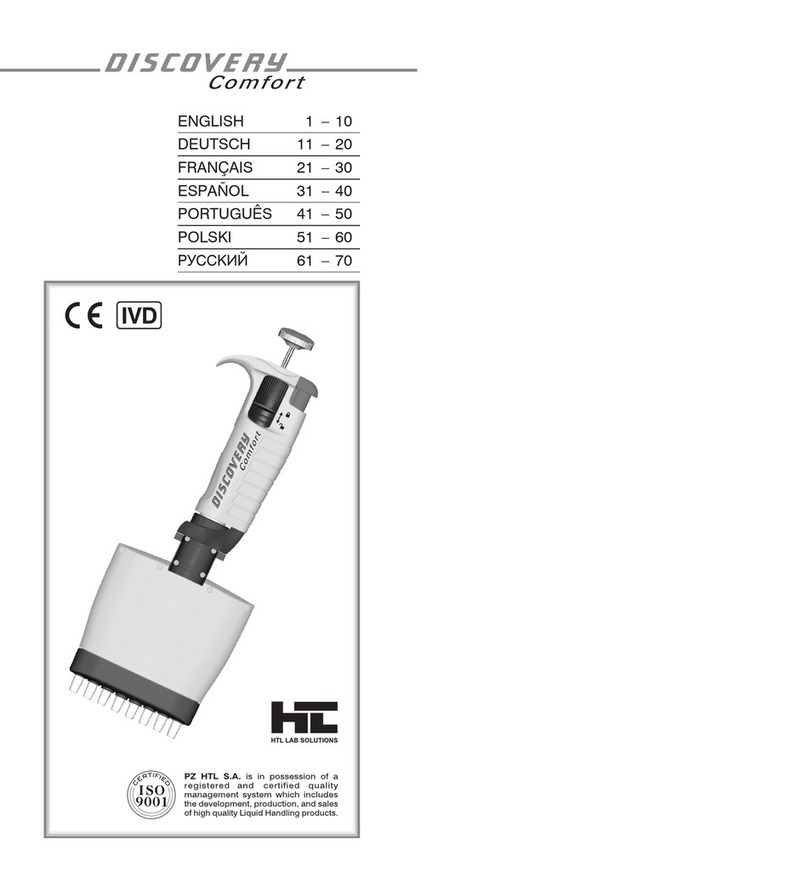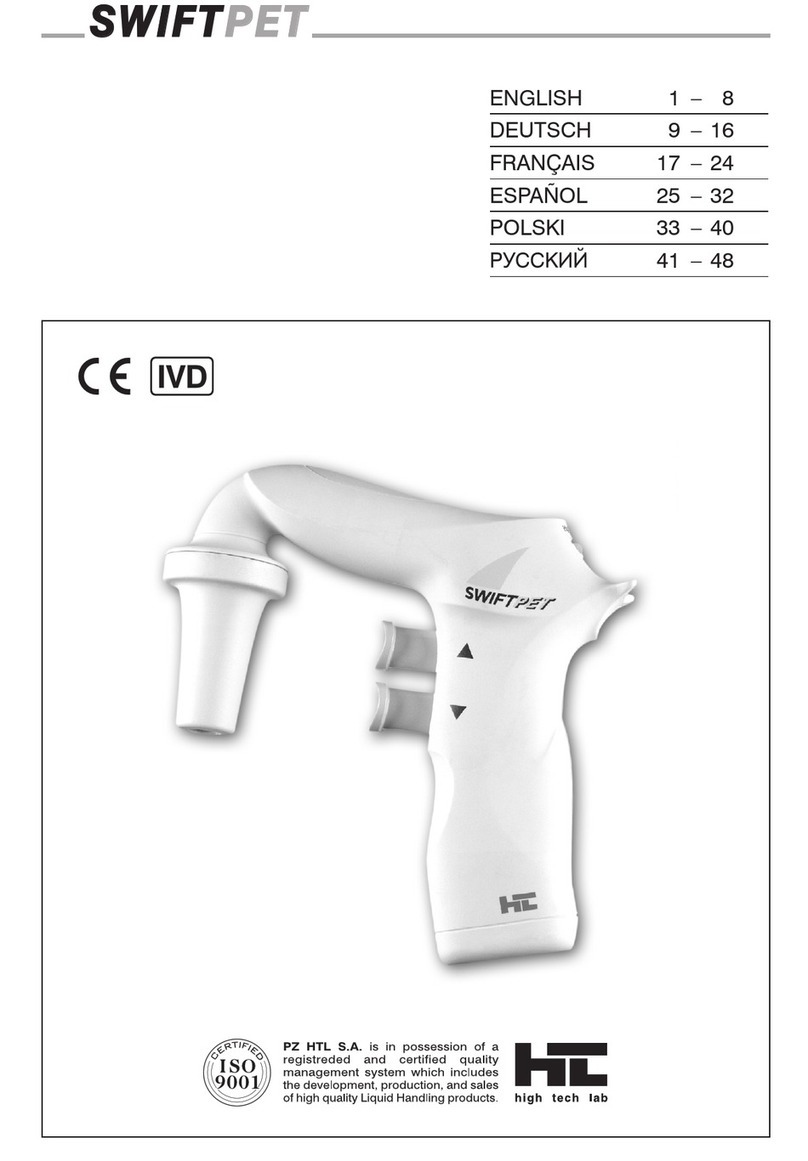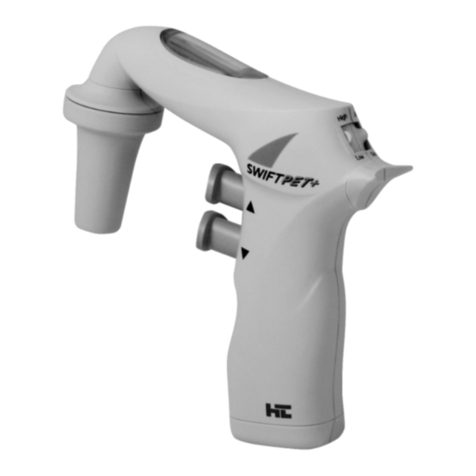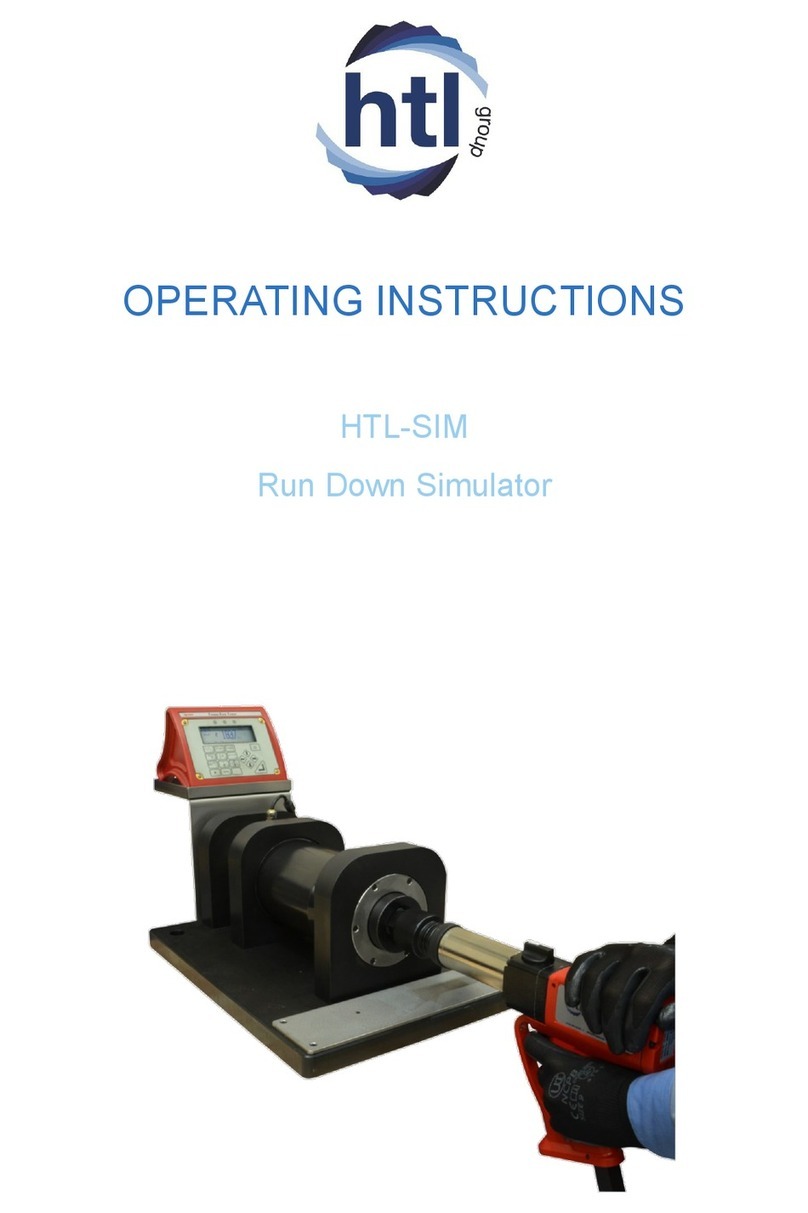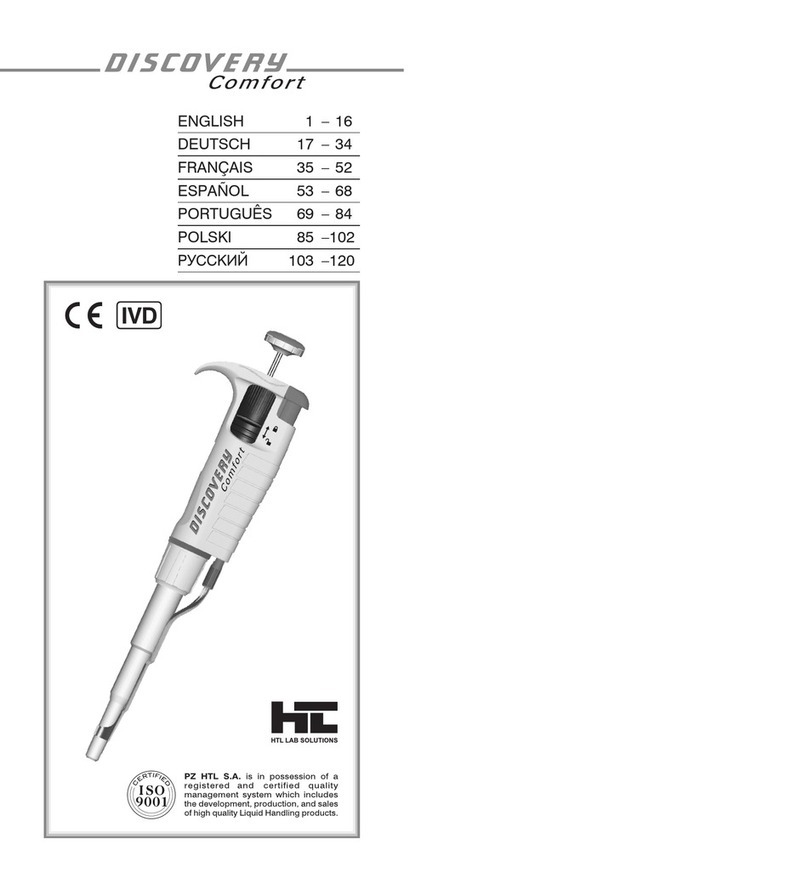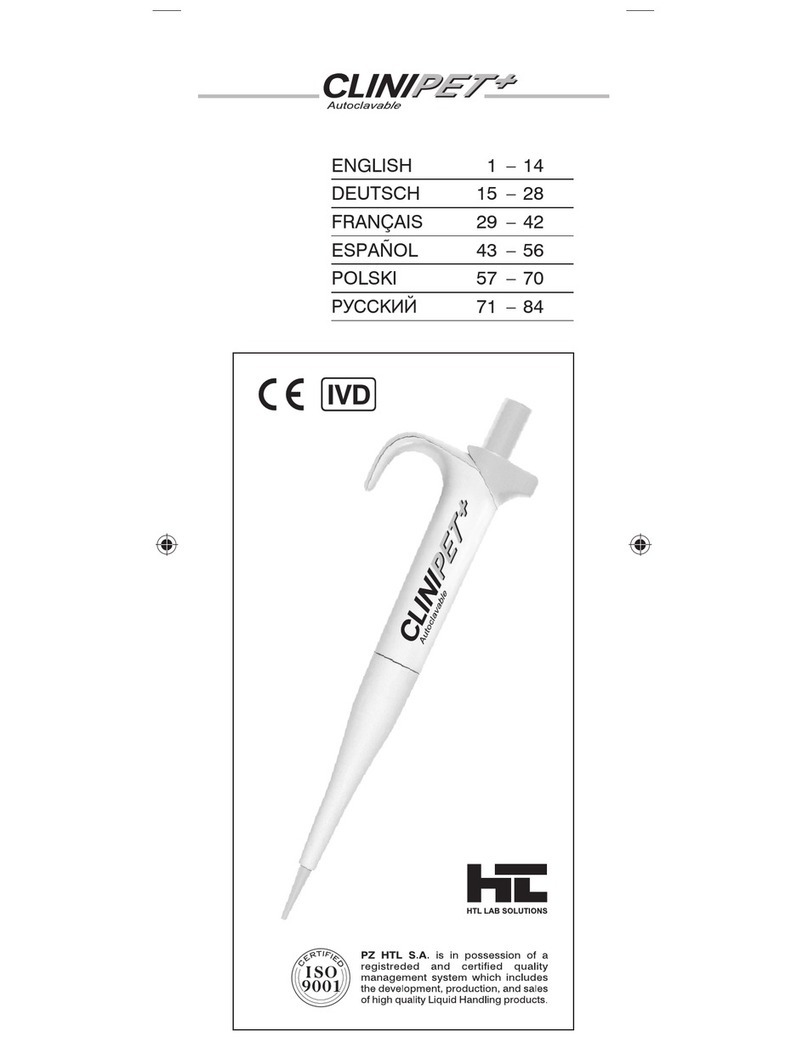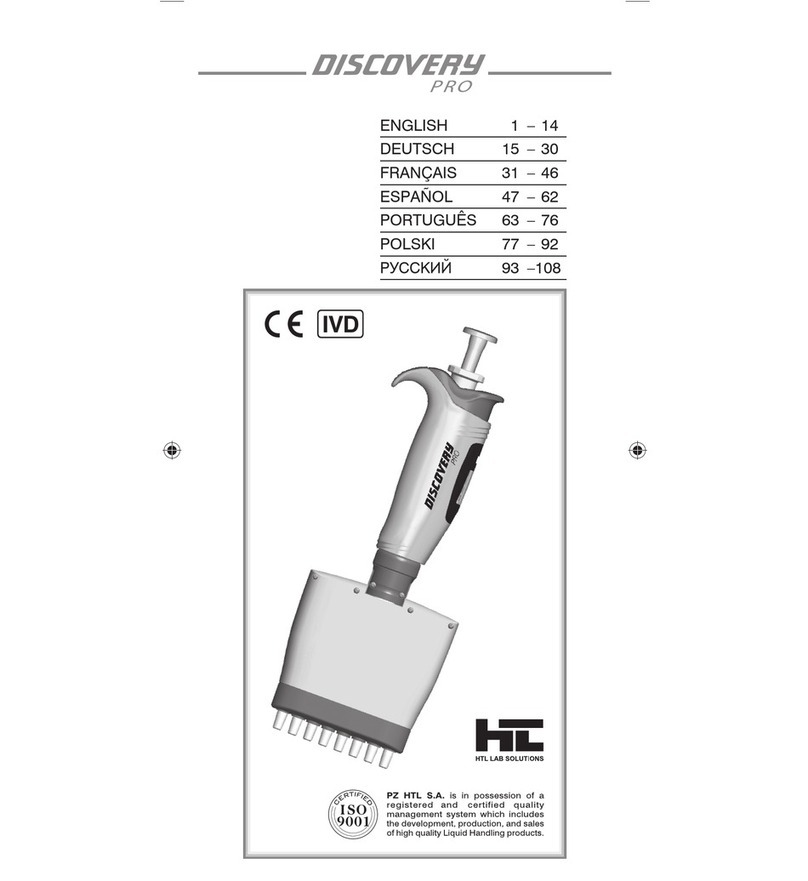
ENGLISH
A - Aspiration button - PP
B - Dispense button - PP
C - Suction speed switch - PP
D - Dispense mode switch - PP
E - Display
F - Nosepiece - PP
G - Pipette holder - SI
H - Membrane filter - PP / PTFE
J - Connector gasket
K - Batteries cover
L - Battery
- NiMH, AAA 900mAh, 1.2V
M- Charging stand
N - Charger 9V: EU, US, UK, AU
INPUT: 100-240V, 50/60Hz, 0.3A
OUTPUT: AC DC 9V, 230mA
Casing - PP
DEUTSCH
A - Entnahmetaste - PP
B - Ausgabetaste - PP
C - Geschwindigkeitsschalter - PP
D - Schalter der Ausgabebetriebsart
- PP
E - Anzeige
F - Schutzabdeckung für den Halter - PP
G - Pipettenhalter - SI
H - Membranfilter - PP / PTFE
J - Dichtung des Verbindungsstückes
K - Akku-Deckel
L - Akku
- NiMH, AAA 900mAh, 1.2V
M- Lade-Basisstation
N - Ladegerätdes 9V: EU, US, UK, AU
INPUT: 100-240V, 50/60Hz, 0.3A
OUTPUT: AC DC 9V, 230mA
Casing - PP
FRANÇAIS
A - Bouton-poussoir de prise - PP
B - Bouton-poussoir de refoulement - PP
C - Sélécteur de vitesse - PP
D - Sélécteur du mode de
refoulement - PP
E - Ecran
F - Capot de fixation - PP
G - Pince (fixation) de la pipette - SI
H - Filtre ∫ membrane - PP / PTFE
J - Joint du raccord
K - Couvercle des accumulateurs
L - Accumulateur
- NiMH, AAA 900mAh, 1.2V
M- Socle de chargement
N - Chargeur 9V: EU, US, UK, AU
INPUT: 100-240V, 50/60Hz, 0.3A
OUTPUT: AC DC 9V, 230mA
Support - PP
ESPAπOL
A - Botón de succión - PP
B - Botón de dispensación - PP
C - Selector de velocidad - PP
D - Selector de modo de dispensación -
PP
E - Pantalla
F - Cono de protección PP
G - Boquilla de conexión para pipeta SI
H - Membrana filtrante
J - Junta de acople
K - Cubierta de la bateria
L - Batería: Ni-MH
- NiMH, AAA 900mAh, 1.2V
M- El soporte de carga
N - Cargador 9V: EU, US, UK, AU
INPUT: 100-240V, 50/60Hz, 0.3A
OUTPUT: AC DC 9V, 230mA
Carcaza: PP
POLSKI
A - Przycisk pobierania - PP
B - Przycisk wydawania - PP
C - Prze∏àcznik pr´dkoÊci
pobierania - PP
D - Prze∏àcznik trybu wydawania - PP
E - WyÊwietlacz
F - Os∏ona uchwytu pipety - PP
G - Uchwyt pipety - SI
H - Filtr membranowy - PP / PTFE
J - Uszczelka ∏àcznika
K - Pokrywka akumulatorów
L - Akumulator
- NiMH, AAA 900mAh, 1.2V
M- Podstawka do ∏adowania
N - Ładowarka 9V: EU, US, UK, AU
INPUT: 100-240V, 50/60Hz, 0.3A
OUTPUT: AC DC 9V, 230mA
Obudowa - PP
êìëëäàâ
A - äÌÓÔ͇ ̇·Ë‡ÌËfl - PP
B - äÌÓÔ͇ ‚˚ÔÛÒ͇ÌËfl - PP
C - èÂÂÍβ˜‡ÚÂθ ÒÍÓÓÒÚË - PP
D - èÂÂÍβ˜‡ÚÂθ ÂÊËχ
‚˚ÔÛÒ͇ÌËfl - PP
E - ÑËÒÔÎÂÈ
F - ëÚ‡Í‡Ì ‰ÂʇÚÂÎfl ÔËÔÂÚÍË - PP
G - ÑÂʇÚÂÎfl ÔËÔÂÚÍË - SI
H - åÂÏ·‡ÌÌ˚È ÙËÎ¸Ú - PP / PTFE
J - èÓÍ·‰Í‡ Òo‰ËÚÂÎfl
K - äp˚¯Í‡ ‡ÍÍÛÏÛÎflÚÓÓ‚
L - ÄÍÍÛÏÛÎflÚÓ
- NiMH, AAA 900mAh, 1.2V
M- èÓ‰ÒÚ‡‚͇ ‰Îfl Á‡fl‰ÍË
N-
á‡fl‰ÌÓ ÛÒÚÓÈÒÚ‚Ó 9V: EU, US,
UK, AU
INPUT: 100-240V, 50/60Hz, 0.3A
OUTPUT: AC DC 9V, 230mA
äÓÔÛÒ - PP
